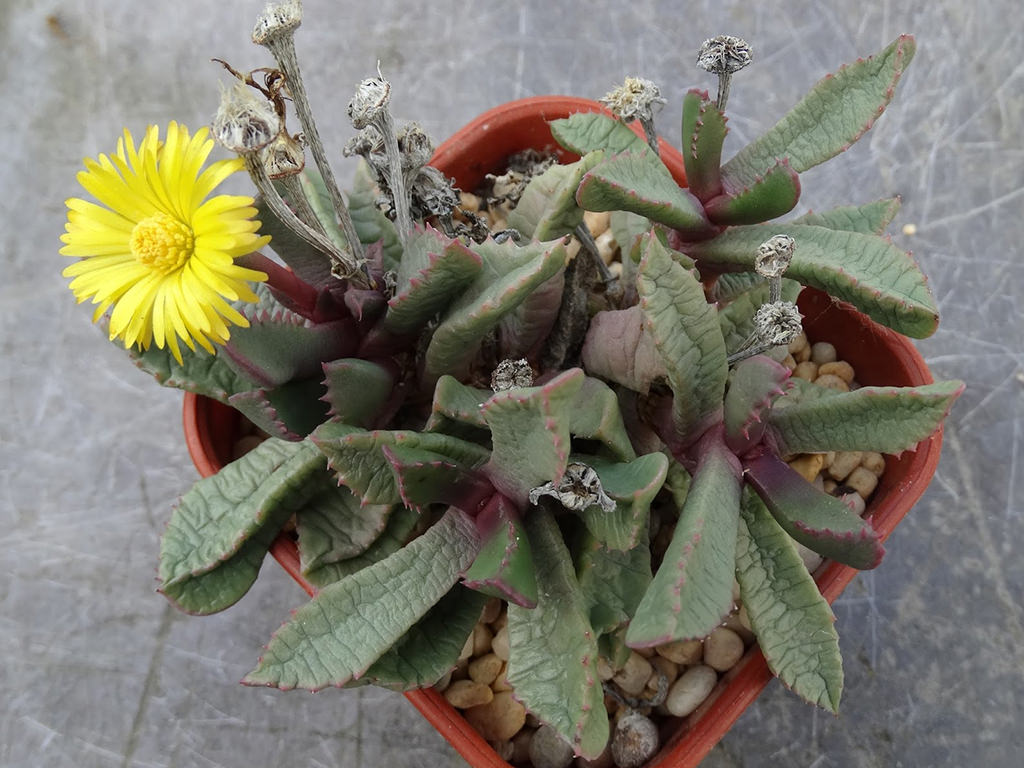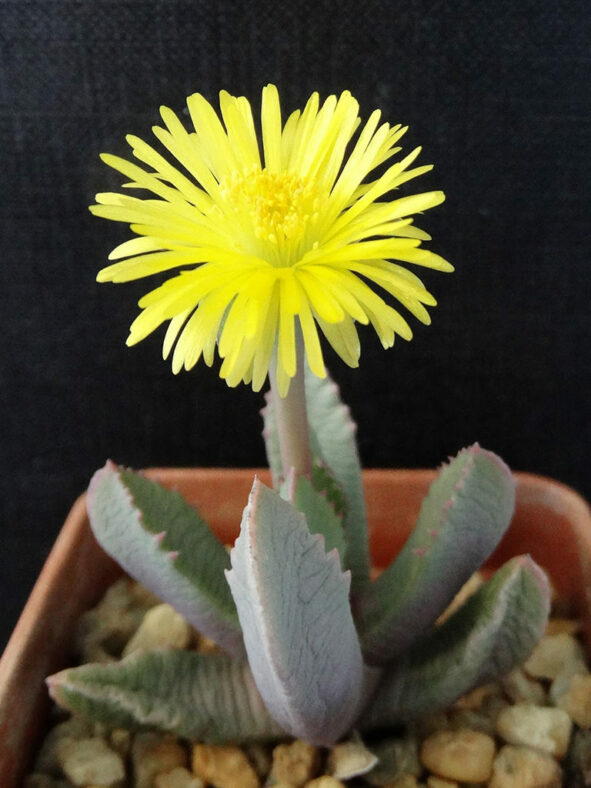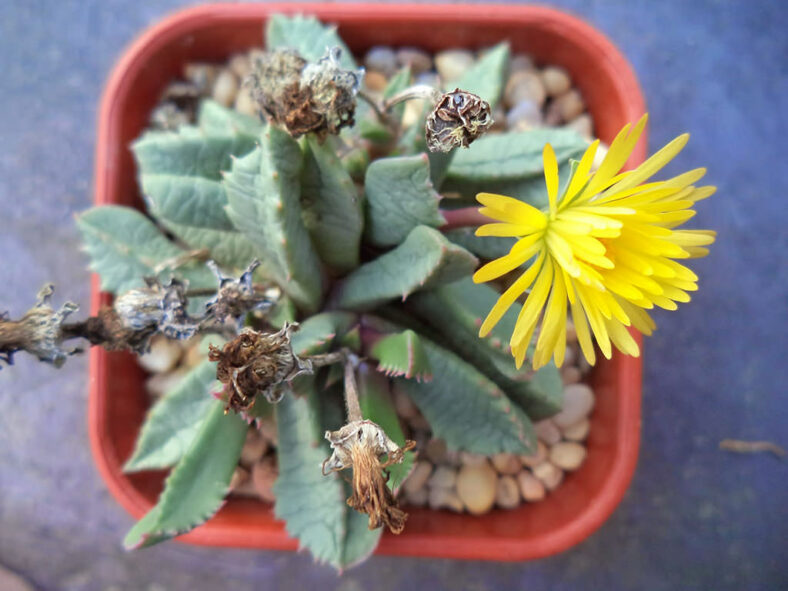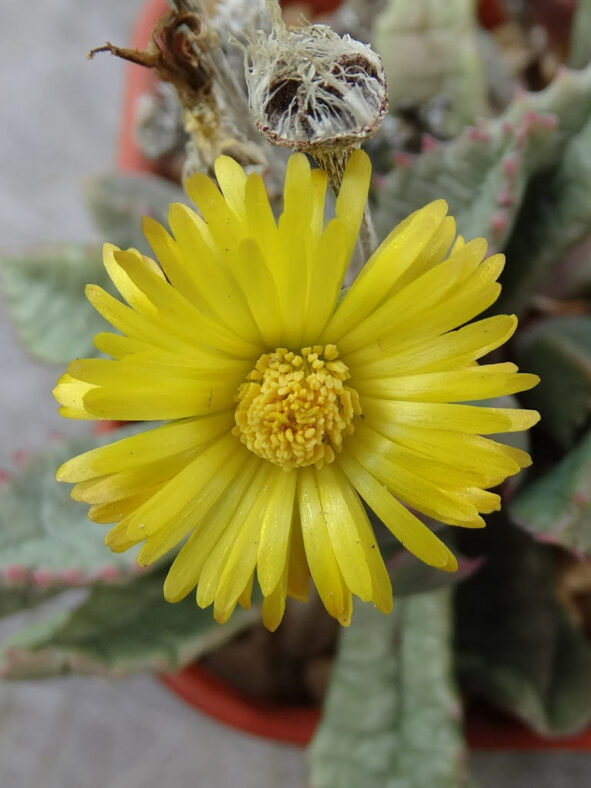Carruanthus ringens is a recipient of the prestigious Award of Garden Merit of the Royal Horticultural Society.
Scientific Name
Carruanthus ringens (L.) Boom
Synonym(s)
Carruanthus caninus, Carruanthus vulpinus, Mesembryanthemum ringens
Scientific Classification
Family: Aizoaceae
Subfamily: Ruschioideae
Tribe: Ruschieae
Genus: Carruanthus
Etymology
The specific epithet "ringens (pronounced RIN-jens)" means "gaping" and refers to the open-mouth appearance of the leaves.
Origin
Antegibbaeum fissoides is native to South Africa. It grows on conglomerate in shallow pockets of soil from Calitzdorp in the Western Cape to Willowmore in the Eastern Cape province.
Description
Carruanthus ringens is a small succulent with short stems and toothed, gray-green leaves that grow in pairs fused at the base. It branches from the base and forms a dense clump that can reach 8 inches (20 cm) in height and 16 inches (40 cm) in diameter. The leaves are fleshy, triangular in cross-section, with soft teeth along the margins, and can grow up to 2.4 inches (6 cm) long and 0.7 inches (1.8 cm) wide.
In spring, the plant produces large yellow flowers with numerous narrow petals. The flowers can reach up to 2 inches (5 cm) in diameter and appear on an erect stalk that can grow up to 4 inches (10 cm) long. The fruits are 5-locular capsules with tiny brown seeds.

How to Grow and Care for Carruanthus ringens
Light: Carruanthus ringens requires bright light but not too much direct sunlight. So, a windowsill that receives 4 to 5 hours of direct sunlight in the morning and partial shade in the afternoon will be a perfect spot for indoor growing.
Soil: The plant thrives in porous soil, allowing the water to drain away quickly. Therefore, use commercial soil for succulents or make your own well-draining mix.
Temperature: High temperatures are not a problem as long as there is plenty of fresh air, but this plant is not cold-hardy. It grows best in USDA Plant Hardiness Zones 10a to 11b, with average minimum winter temperatures ranging from 30 to 50 °F (-1.1 to 10 °C).
Watering: To keep Carruanthus ringens healthy, it is most important to know when, how much, and how often to water. During the dormant period, usually in winter, the plant requires little or no water. From spring to fall, water it thoroughly but allow the soil to dry between waterings.
Fertilizing: As long as you repot this plant every two years, it does not need fertilizer.
Repotting: Even if it can stay happy in the same pot for years, once in a while, you can repot your plant to give it more space anytime during the growing season. However, the best time is at the beginning of the growing season.
Propagation: Although it is typically propagated from stem cuttings in late spring and summer, Carruanthus ringens also can be started from seeds.
Learn more at How to Grow and Care for Mesembs.
Toxicity of Carruanthus ringens
Carruanthus ringens is considered non-toxic and safe around kids and pets.
Links
- Back to genus Carruanthus
- Succupedia: Browse succulents by Scientific Name, Common Name, Genus, Family, USDA Hardiness Zone, Origin, or cacti by Genus
Photo Gallery
Click on a photo to see a larger version.


